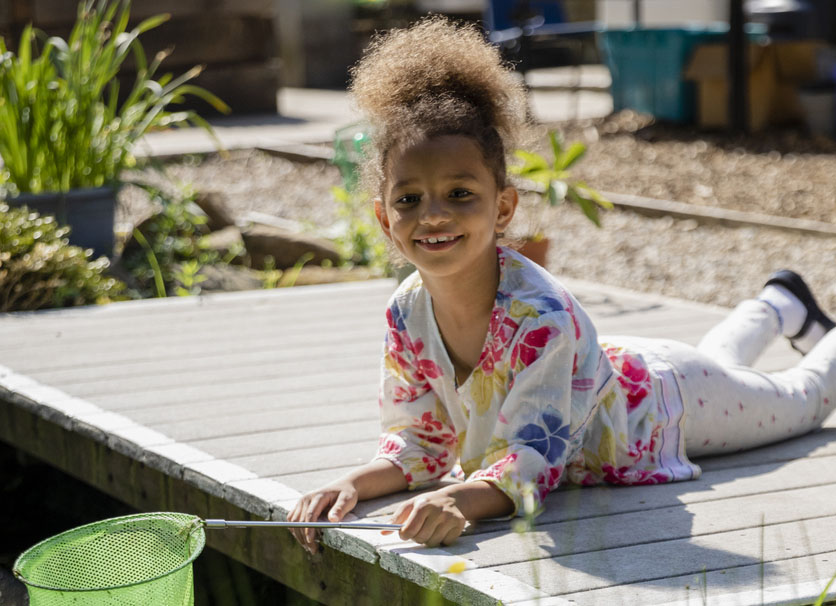Hooked on Science
By Tracy Lavallee Exemplars Science Editor and Consultant

"A child's mind is not a container to be filled, but rather a fire to be kindled."
- Dorthea Brande
Kids are natural scientists: driven by curiosity and wonder, always exploring and playing, and always asking questions. They’re already hooked on science—they just may not know it yet! So how do we keep that joyful spark alive in our classrooms?
As teachers, we are always thinking about engagement and how to hook our students into the learning that’s happening. It’s how we launch into any new unit, project, or concept and skill. And in every subject, how we begin is the foundation for all future learning. It’s truly the most important step in priming them for understanding.
That’s just as true for science as for any other subject. But you may not know intuitively how to make it happen. If you aren’t quite comfortable yet teaching science, that’s okay: We can learn new things right alongside our students!
What Do Science Hooks Look Like?
Planning ways to hook students begins with the active incorporation of scientific ideas and phenomena. The keyword is active. Science is never passive. Think of science as a verb. Here are some approaches to consider and the principles behind them:
- Get their attention. You can’t engage your students if you don’t prime their brains for serious learning. A good hook at the beginning of lessons and units will stimulate curiosity, activate prior knowledge, and establish a purpose for learning.
- Make it authentic. Ask students to defend their positions or present their ideas using their own data to an authentic audience, like each other. Allow opportunities for invention and innovation with real-world problems or challenges. When teachers put the emphasis on engagement and critical thinking in these ways, students become actively involved in doing the work of science and feel like real scientists.
- Give students more choice in what and how they investigate. The science classroom dynamic has changed over the years. Now teachers guide and facilitate student learning by providing them with opportunities for more student-directed/centered lessons and units. Students can then ask their own questions, collect more meaningful data, and create models to show their reasoning and continuously reflect and revise their thinking. It allows them to share their learning with others in meaningful discourse using evidence from their investigations.
- Use scientific phenomena and events to nurture and encourage questioning. Learning to think and behave like a scientist allows students to learn how to ask questions that can be investigated. This also helps them see that what they’re learning in class can be used in the real world which helps deepen their understanding. It also allows students to plug into their natural curiosity and look at things around them with a fresh perspective.
How to Hook Students
Okay, that’s the “what”, but what about the “how”? First, start small, start simple. Think about the science unit you will be teaching. What are the most important ideas/concepts and skills you want your students to know and be able to do at the end? Think about real-world phenomena that connect to the science in the unit. Ask students to observe, and ask them to notice, wonder and think each time.
Hooks can be quick, but it’s worth taking the time to find some that work for you and your students. It will vary with each unit or lesson, and even in each classroom. Here are just a few suggestions you might want to try:
- Video clips and photographs of scientific phenomena, ideas, and events. Engage students in discussions about what they notice, wonder, and think. Checkout our blog on Science Talk for more ideas!
- Go outside! Observe the world around you. Find something that you are curious about.
- WonderWall. Keep an ongoing list of student questions.
- Science Toys. Not only are they engaging, but they are fun!
- WOW Facts. Have students keep a page in their science notebooks just for WOW facts!
- Exploration and discovery. Allow students to “play” with materials before beginning as a way to engage and get them asking questions.
- Challenges. Offer students challenges where they have to design, build, change or test something.
Once you start thinking about engagement, it gets easier to find creative and exciting ways to hook your students. There’s science all around us just waiting to be explored! Exemplars is here to help you get kids engaged with science…and maybe in the process you’ll get hooked, too.
"Children are messy little scientists who come to us, eyes bright with wonder, all their senses open and motors running."
- Jim Greenman

